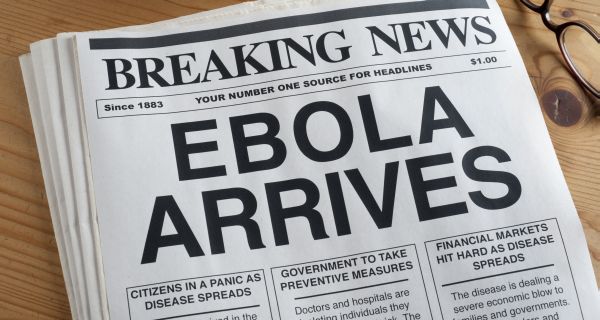On 28th of December 2013, Emile, a two-year-old child who lived with his family in a small Guinean village near the border of Sierra Leone and Liberia died. A few days later, his three-year-old sister and pregnant mother showed the same symptoms and died too. Some of the people who took care of the family and attended the funerals in the coming weeks also died. Those who had come in contact with them in turn contracted the virus and unwittingly contributed to its spread. Months later epidemiologists traced Emile as “Patient Zero” of what today has become the most serious known Ebola virus epidemic.
To date, more than 16,000 people have been infected in West Africa. It is estimated that the death toll is already more than 6,000. Despite the existence of complex mathematical models that experts can use to outline possible future scenarios, it is still difficult (perhaps impossible) to predict how this situation will evolve, to predict how and when it will lead to the desired outcome of “zero cases”.
Billions of dollars have been promised by international donors, various countries have mobilized their armies, but none of this appears to be alleviating the concerns of people living in three of the most affected African countries: Sierra Leone, Liberia and Guinea. Reaching the goal of “zero cases” is still uncertain and unclear.
However, one thing we do know is that this epidemic had a “beginning”: Emile.
Tracking down “Patient Zero” has allowed for further understanding of this epidemic: how it spread in its early stages; the strain of the virus, and if it has genetically mutated or not since the outbreak. Currently, tracking down who could possibly be infected from the confirmed cases seems to be one of the key strategies in fighting the virus: “If you can bring rigor to this contact tracing, you can drive this thing to zero. You have to hunt the virus”, said Bruce Aylward, WHO Assistant Director General at a recent conference in Geneva.
The epidemiological fiction of “Patient Zero” seems to be useful to health experts in developing rapid and effective intervention strategies. However, it has little sense in socio-historical terms. And, if it has little or no sense in these terms, we can raise some doubts about the efficacy of the diagnosis and its solutions.
Where and when did this epidemic begin? In Guinea in December of 2013? Or before and elsewhere?
Peter Piot, one of those who discovered the Ebola virus, called the epidemic of 2014 a “perfect storm”, that is, a combination of a: “dysfunctional health service as the result of decades of war; low public trust in government and Western medicine, traditional beliefs and even denials about the cause or existence of the virus, and burial practices that involve contact with contagious Ebola-infected corpses.”
The meteorological metaphor of the storm has obvious limitations. It can lead us to believe that in this event, the unpredictable, the imponderable or even the inevitable are at play. In other terms, there are forces beyond human control. Moreover, it dismays us because it puts us in front of a potentially unlimited number of causal factors that – combined in random and unpredictable ways – make any explanation elusive. It can lead us to believe that, if there are any responsibilities, these are many and widespread: everywhere and, therefore, nowhere. It can deceive us into thinking that we are dealing with an exceptional event that can be addressed in purely emergency terms: once the last infected person is cured, the storm will be over and the problem solved.
The metaphors of “Patient Zero” and “perfect storm” are innervated by two very different temporal logics: on the one hand, the temporal uniqueness that repeats at every new epidemic and, on the other hand, the temporal convergence of multiple factors in an exceptional event.
 They have, however, something in common: they erase the history and circumscribe our geographical horizon. This takes us away from deeper and broader causes.
They have, however, something in common: they erase the history and circumscribe our geographical horizon. This takes us away from deeper and broader causes.
Ebola means suffering; the fear of being infected, the hope of being healed; the physical pain and the mental distress of patients and their families; the hunger and anger felt under a quarantine imposed by a state of emergency. But it also means the lack of basic infrastructures and weak health services; shortage of protective equipment and drips with fluids and electrolytes for rehydration therapies. These are not the fatal result of an aleatory combination of abnormal circumstances, but the product of social inequality and structural violence generated and perpetuated by chains of social-historical forces of short and long term. In short, Ebola is – to use Paul Farmer’s words – a “socially produced phenomenon”.
But if Ebola is more than an infectious disease caused by a zoonotic filovirus then we must also critically rethink the metaphors by which we make sense of the dramatic experience of so many sufferers.
To retrieve the historical-geographical depth of this dramatic event is to enrich our knowledge of the details, to establish precise causal nexuses between diseases, deforestation, mining activities, poverty, civil wars, corruption and social inequalities. Implied in this approach is the idea that the points of views of those who experience the suffering and hardships of this epidemic directly should be part of our accounts, not part of the problem to be solved.







